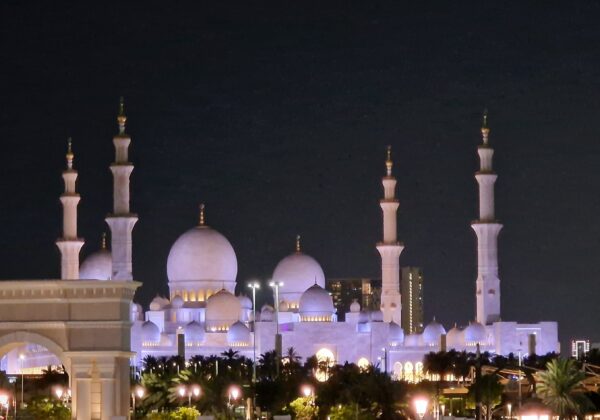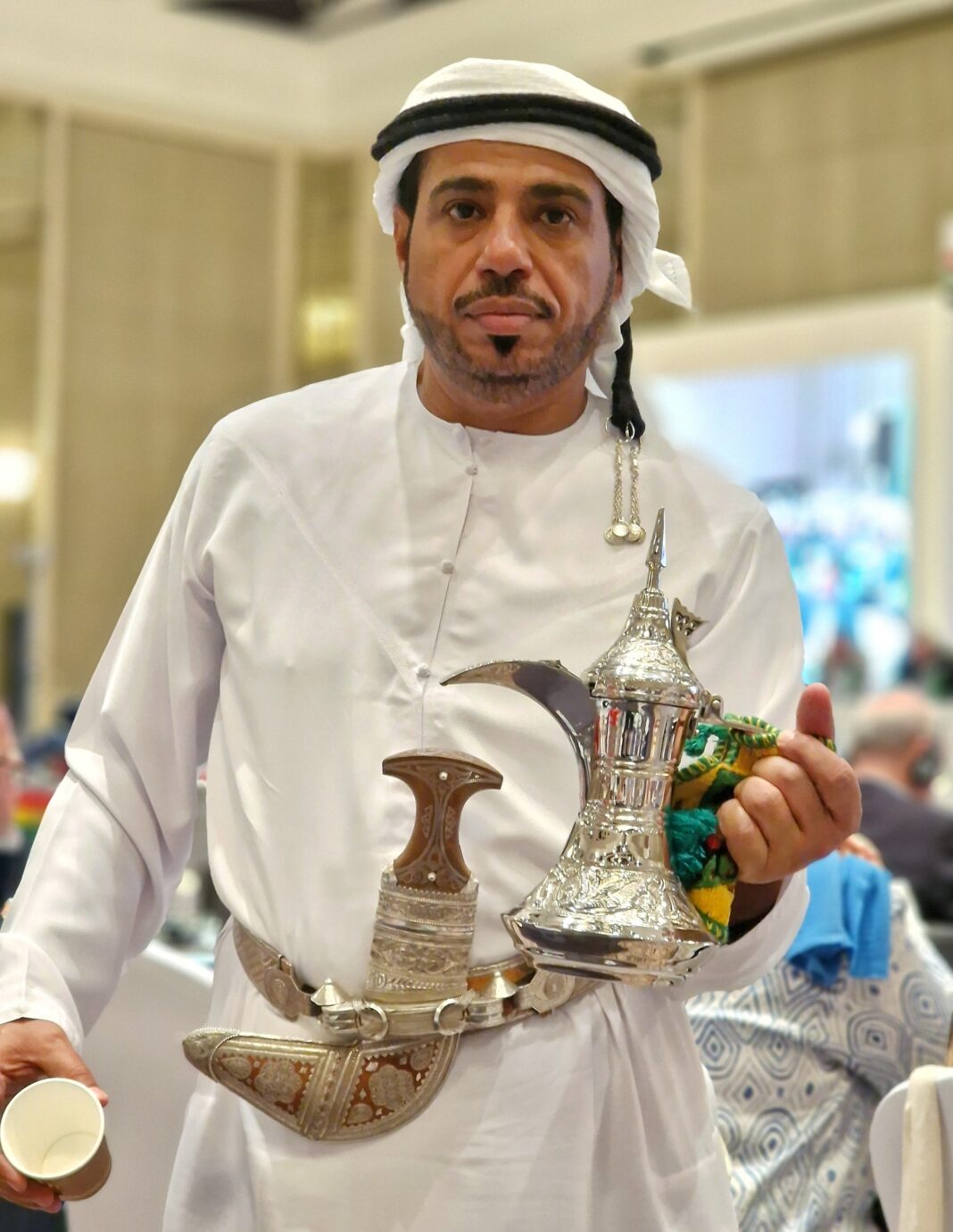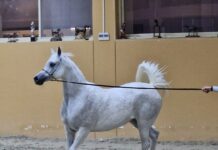Welcome to the live coverage of the General Assembly in WAHO Abu Dhabi 2025, sponsored by Rifat Arabians Australia.
We are now onto the second day of the General Assembly, so please enjoy this live feed as it happens.
5.14pm
The timetable follows – so that is me done! I will be back with the rest of the WAHO coverage as the days go on, but for now, it is time for a well-earned rest.
If you have enjoyed this coverage and would like to buy me a coffee, you can do so here.
5.10pm
Deirdre is now sharing news on the upcoming Heritage Days.
Tomorrow night will be going to Al Ain to go to the closing race meeting.
Saturday is the last race meeting in Abu Dhabi.
Friday is Dubai, a restored old area partially rescued by King Charles II who asked why these old buildings were being torn down. There are shops, galleries, and tea rooms. Then it off to Dubai Arabian Horse Stud for a parade and dinner.
Saturday morning – Al Reef Racing and Endurance stables to see the horses there, an early start!
Stud visits had been planned, but the dates coincided with GCAT show in Riyadh, but this record number of people wanting to attend made it impossible for the studs cope with everyone. They have sent their regrets, and we wish them the best of luck with the Riyadh Show.
5.09pm
The conference is now closed – with news to follow in the future on the next conference, as no location has yet been decided.
5.02pm
Peter concludes it has been a fabulous conference. Jaroslav says thank you on the behalf of the delegates – and then I get to say the thanks on behalf of press and observers. Thank you for the honour!
4.58pm
Thank you time!
The Royal Family, HE Mohamed Alharbi, and the EAHS get the first thanks.
The St Regis hotel, a magnificent conference venue.
Nirvana, the travel company.
FAYT, who have helped tremendously; X14 have done a great job.
The audio/visual team.
The Arabian horse press who came here to promote the conference.
Last but not least, Katrina Murray, Natalie Meredith, and Deirdre Hyde.
4.58pm
They are the two major things the Executive Committee have been working on the past couple of years. They are both very big and very exciting! They will both move WAHO forward in a very positive direction.
4.56pm
Peter continues, saying he has a passion for a WAHO-owned office, and he hopes that in a short period of time, within the next year, that the finance will be there and he will be able to share that WAHO will own an office in the United Kingdom.
4.54pm
To the future…
The development of a cloud-based WAHO database. We are very close to making this a distinct possibility, which is exciting. It takes a huge financial input but Peter is hopeful that this will become a reality very shortly.
As breed societies go, this will be the first, making WAHO a leader once again. Go the Arabians!
4.53pm
Peter takes the floor again, saying it is a sad day for the Executive Committee, but in HRH Princess Alia, we have a very worthy replacement, to which there is a standing ovation.
4.51pm
Marek continues, saying that WAHO has challenging times ahead, especially with the new technologies coming along. The world is definitely changing at a fast pace, and I wonder whether man can keep up…
4.47pm
Marek says that everything has an ending, and thanks everyone for the past nine years since he became Vice President.
He also thanks all the friends of the Arabian horse with who has had the privilege to work. Marek says the past 21 years has been a wonderful adventure.
Taking over as Vice President is HRH Princess Alia, and Marek says that he knows WAHO is in safe hands with her. He adds that it is an honour for this organisation to have Princess Alia on the committee. There is much applause.
4.45pm
There is a retirement from the Executive Committee – Dr Marek Trela, who is also Vice President. That is big news.
They have made Marek an honorary Executive Committee member, and Peter would like to offer Marek a lifetime membership to WAHO. Czech Republic and Poland approve, and the motion is carried.
Marek now says a few words…
4.44pm
Peter has asked if we can get a group photo at the end. There are a lot of us here, so that could be interesting!
4.42pm
This is a beautiful painting from the WAHO community for HE Mohamed Alharbi, deservedly so.
4.40pm
More applause as Peter thanks Emma.
I think we are almost done! Just a couple of agenda items left.
First, a surprise presentation for someone…
4.39pm
Emma closes by remembering Deb Fuentes. She is truly missed by so many.
4.37pm
Emma wonders whether horses who go white later live longer? A wonderful excuse to share these photos of one of my all-time favourites, Maleik el Kheil.
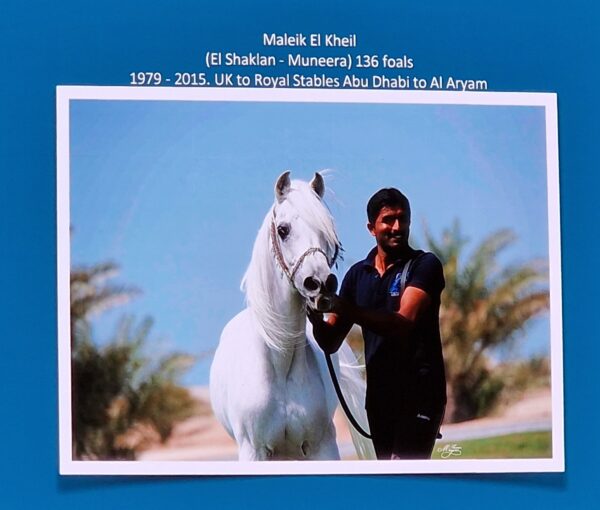
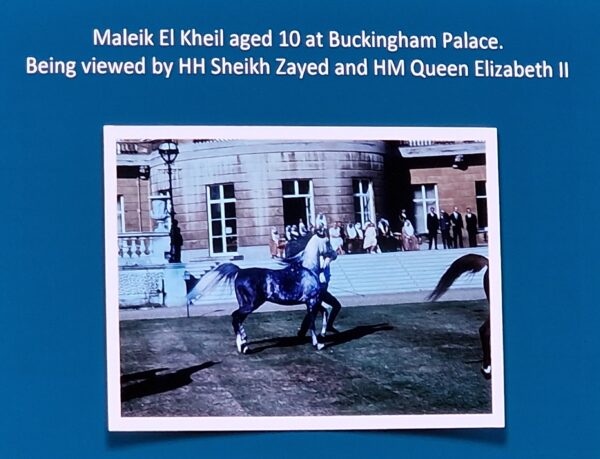
4.31pm
Emma is giving so much information here, it is impossible to share with you here. I have already asked Emma for a copy of her presentation and I hope to post it with you soon.
4.25pm
Heads and legs have changed the most. “If a dish is good – then a huge dish must be much better!” When you shorten the head first, the teeth don’t always get the memo…
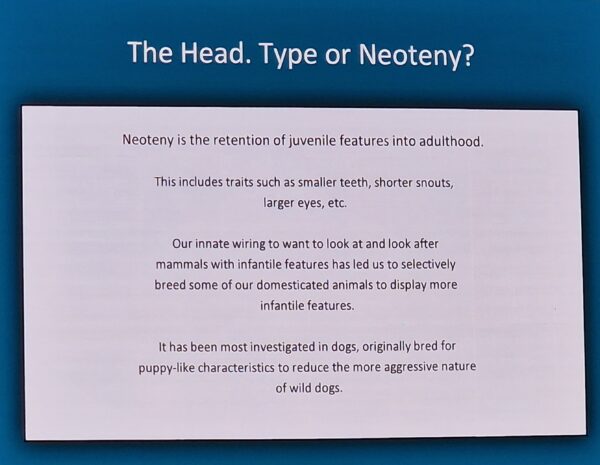
4.24pm
This photograph shows how stallions used to be calm together – whereas now the ‘strikers’ are being chosen above all overs.

4.17pm
So much has changed – the stance, the photography, and the horse!
Emma challenges did more photogenic stallions get more stallions to breed, regardless of what they looked like in the flesh?
4.14pm
Emma then shows a video to show how the US National Champion halter stallions have changed from 1958 to 2024. A mix of fascinating and alarming to see what we are doing to the breed.
4.09pm
There are also foals being bred by frozen semen from stallions long since passed, including Aswan, Padron and Burning Sand.
4.07pm
Embryo transfer has resulted in mares having an amazing number of foals, including RP Miss Surprise with 36 foals and D Shala with 33 foals.
4.04pm
The most important horse of all? The pleasure horse.
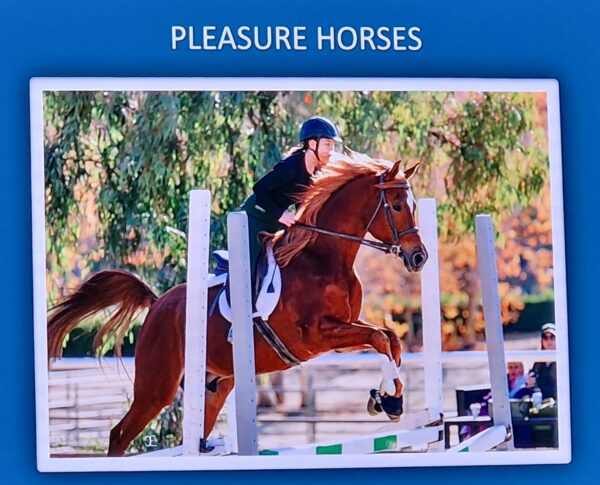
4pm
“The Egyptian Arabian is the only bloodline that has not been put into a blender and completely homogenised”, says Emma as we look at an iconic shot of Ansata Halim Shah. While there are pockets of straight Crabbets, Polish, Spanish, and Russian still to be found, Emma is right in that the Egyptian is the largest pure bloodline remaining.
These have now splintered into the modern Arabian horse.
3.55pm
Emma stressed the fact that the Arabian horse was so versatile in the 1970s – and was even its USP in the States!
3.47pm
This going to be a photograph-heavy presentation, so you may have to wait until I have a copy from Emma to share with you in full. Suffice to say, we are enjoying looking at horses of yesterday – many of whom had descendants still winning today.
3.46pm
1970, when WAHO began, was just a blink away.
The horse being vacuumed is Aramus, US National Champion in 1970!
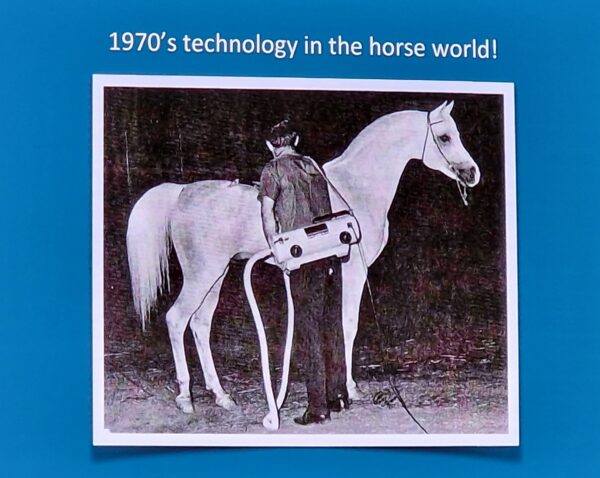
3.44pm
Emma is talking on 1970s Technology in the Horse World.
She begins with famous horses from the era WAHO began.
3.42pm
Now to our second speaker – who needs no introduction. Emma Maxwell.
She grew up in a horse-breeding family who bred Arabians until 2002, producing World Champions and Stakes winners. They combined external beauty with athleticism.
Emma was a top Arabian horse trainer, an amateur jockey, and is a judge and keen photographer.
3.40pm
To be elected you need to receive 50% of the total votes, and Dr Machmoum was the only one who reached that ,
Mohamed thanks everyone for their trust.
The General Assembly need to approve this appointment – Canada and Bahrain will make the motion. And there is a sea of waving green flags.
3.37pm
We are back!
Only one person can be elected due to the 50% rule, and Dr Mohamed Machmoun has been elected with 60 votes of 109 papers lodged.
The rest will be kept secret.
3.07pm
While we are waiting, Peter is reading a small piece by World Horse Welfare on a good life for horses.
Our aim should be to ensure that horses have a good life in every way – friends, forage, freedom. I shall share it here with you soon.
Break time!
3.04pm
They are now checking for election results.
The next speaker will be Emma Maxwell – always something to look forward to!
3.03pm
Peter thanks Monika and adds he thought that this topic would be invaluable for us here today.
3pm
We need to ask ourselves what the consequences are. We have turned it into a profit-orientated technology, and forgotten about the health for the horses in the meantime.
Thank you for your attention.
The presentation ended with questions, and a film of mares and stallions out in a paddock together, playing naturally.
2.57pm
Monika thinks this is something that would benefit from future research.
2.55pm
Epigenetics can be development or environmental.
You could say the embryo transfer foal has three parents. They will be heavily influenced by the mare carrying the foal. This can lead to all sorts of issues in the future.
2.54pm
Embryo transfer is also very invasive for both donor and recipient mare.
It takes a lot for every transfer to be successful – not just cost, but hormones and fertility issues.
2.51pm
Then we come to embryo transfer, which is now commonplace in many countries.
Originally, it was designed to be used in exceptional conditions, such as when a mare couldn’t carry a foal to term herself. This then expanded to show and performance mares being bred by embryo transfer.
Then, breeders realised that they could sell embryos and make money by doing so.
Only a small percentage of foals born this way will be successful, which creates issues in itself.
Producing several full siblings in the same year trivialises breeding. Quality – not quantity!
2.51pm
Genetic testing is now widely available – test before you breed.
2.47pm
It is not uncommon for a champion to have 1,000 foals with modern shipping of semen. These genetics spread all over the world – and are then mated with each other.
Genetic effects can then become common and homozygous.
One chromosome must be free from defects to preserve breeding. Natural selection would normally take over, so lines would die out. However, genetic diversity is being lost.
2.46pm
Less fashionable stallions are often overlooked. This results in a loss of quality.
As a result, the gene pool of our current horse breeding has narrowed. A modern pedigree often shows as high degree of inbreeding.
Inbreeding should only be used up to a certain percentage, and according to scientific criteria.
2.45pm
Before the widespread use of semen, we would look for breeding stallions and how they would complement their mares. You could also buy their sons. Now, with semen available, mare owners no longer want to do either of these things.
2.44pm
Frozen semen has enabled Arabian stallions to become part of a globalised market.
Now the semen comes to the mares – an advantage in terms of risky transport.
2.41pm
The mares also no longer have a choice. The breeder decides, the vet does his job, and she never gets to see the stallion.
These mares suffer a loss of image, reduced fertility, lack of maternal instinct, and more.
It has taken a long point to reach this rejection of the natural breeding process.
2.39pm
The stallion has to know when the mare is biologically ready to be mated.
For so many of our horses, stallions no longer have to be charming – in fact, they are often rather difficult and dangerous. They no longer know limits, they don’t have to be charming around mares.
As as result, they can develop health problems and vices, a sign of mental stress.
The stallion may be very famous, but he is sad.
2.37pm
Experienced breeders know timid dams produce timid foals – and vice versa!
2.34pm
In every species, the male has his own way of showing he is the only one; think of birds in nature, for example.
Males go for quantity, females go for quality, only mating with the best male. The Darwin principle of sexual selection.
2.31pm
Without artificial hormones, there is no natural elimination.
Stallions and mares have had to change to adapt to this new way of breeding. As a stallion, if you wanted to breed, you had to be nice – charming and peaceful.
There is a proven scientific term called ‘female choice’. In the animal world, the male must work for the mating.
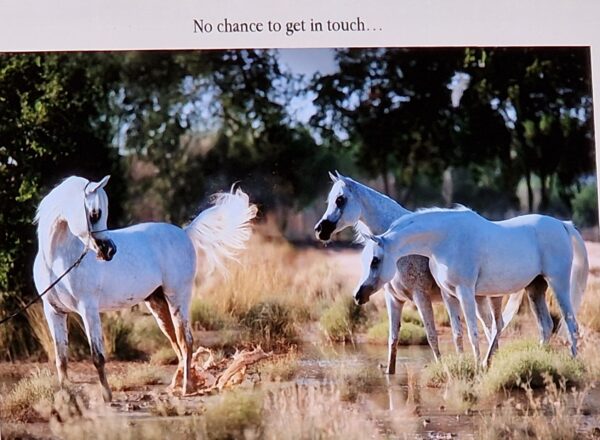
2.30pm
We can initiate change.
Today, there are many breeders who don’t know the real world of the Arabian horses. They are investors, their horses are kept in large training stables to be trained and mated. They trust others to do this, including the breeding decisions.
Real breeders know by doing this artificial breeding, you are denying the horses a full life. How many mares have never shown to be in heat in front of a stallion? Sometimes, the horse knows more than we do.
2.29pm
How has the Arabian horse managed to get across the Orient without the need for AI, ultrasound, and so on?
2.27pm
Horse breeding has come more expensive, but not necessarily more successful.
Plus, our breed’s gene pool has shrunk.
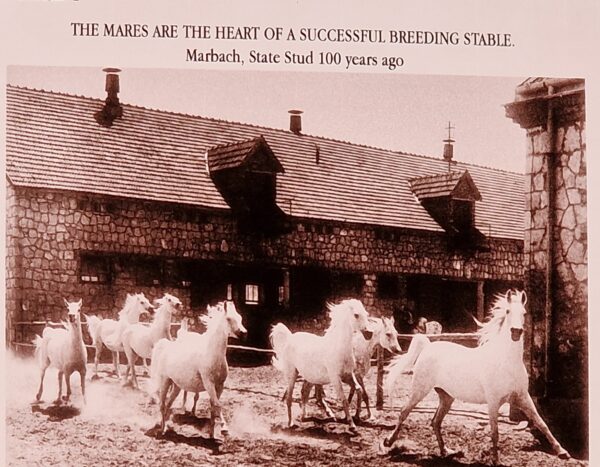
2.25pm
Monika says that she hesitated to speak here – but Basil Jaadan had once said to her that, “horses can’t speak you have to speak for them”. She wants to address some problems that we already have, plus those on the horizon.
“Somewhere along the line, the mental and physical health of the horses has been forgotten.”
2.23pm
Peter introduces Monika, who has been breeding Arabian horses for 40 years, and has published several books. Her talk will be on Female Choice and the Impact of Assisted Reproductive Technology on the Lives of Stallions and Mares.
2.22pm
The voting is almost done, and it will then be time for Monika’s talk.
2.05pm
We are back and the voting papers are being distributed. Once the votes have been cast, we will have a talk from one of the guest speakers – Dr Monika Savier.
1pm
Is now a lunch break until 2pm.
12.58pm
United States proposes the motions, Czech Republic seconded. It’s a wash of green flags – approved.
12.53pm
The registries will now vote on the changes made to the WAHO rules as discussed in that meeting.
Bahrain has spoken out to say that a recommendation cannot be part of rules, and it creates grey areas.
Peter replies that the Executive Committee has to be doing as much as possible to protect the welfare of the mares.
12.50pm
Other items discussed were the controlling the age and of dates of birth of horses in performance, especially racing; an emerging risk for horse welfare through genetic doping – introducing the DNA of a TB into the DNA of an Arabian horse; and a smart card that contains everything in the passport. A solution for the latter is being studied by the EU/French IFCE.
12.48pm
There was also a suggestion to have an online registrars meeting between WAHO General Assemblies. This is still being considered.
12.45pm
Not all countries compulsory test for genetic disorders, and this was also discussed at the meeting.
12.40pm
Each registry was asked to provide details of their most recent stud book, or provide details of online database. Some online databases are a pdf that is there online for all. There are 15 stud books, 11 with pdf online, 27 online databases, and one online subscription. The hope is that all the stud books will be online – which will constitute a WAHO database!
12.38pm
Italy suggested an export document for exported embryos. An example of such a document was shown. There were no remarks, so this document will be tried.
12.37pm
A vote will be done to agree the new amendments.
12.31pm
WAHO rule 19 was then discussed, which is about embryo transfer. The proposal was to limit the number of embryo transfer per year per mare, to one foal. A very long discussion followed in the meeting. 24 countries voted in favour of limiting the rule to one per year, 28 voted in favour of recommending one embryo transfer per year. One was against, and 2 abstained from voting.
The Executive Committee have adopted a strong recommendation for the new rule.
This is all about the welfare of the mares, and many feel quite strongly about this.
12.30pm
WAHO recommends that fillies are over 36 months of age before their first breeding – this was discussed and 36 remains the recommendation.
12.25pm
The next item on the agenda is to receive a report from the Xavier, Chair of the World Registrar Meeting.
56 countries attended the meeting, with nearly 100 attending.

12.24pm
That concludes the presentation, which will be held by secret ballot later today.
11.58am
All the reports are now done and it is time to introduce the nominees for election as a consultant to the WAHO Executive Committee. There are two spaces and the five nominees are:
- Mr Sulaiman Ali Salim Al -Hattali from Oman
- Dr Mohammad Abdul Aziz Al-Nujaifi from Iraq
- Mrs Shahrzad Amir Aslani from Iran
- Ms Helen Dohan from Australia, and
- Dr Mohamed Machmoum from Morocco/Libya
Each nominee will now make a speech to the delegates ahead of the vote, which will take place later today.
11.56am
The final report is the Asil Iranian Association, established in 1991 and who are now able to export their horses for the first time in many years.
11.49am
The Pyramid Society is here, represented by Barbara Cole of the new Pyramid Society Foundation. Both the Asil Association and the Pyramid Society Foundation have the aim to preserve specific bloodlines, and they have a huge following.
11.45am
That was the last of the registry reports. There will be some association reports, starting with the Asil Association.
11.38 am
We now go to Ukraine, Peter says that everyone is devasted by what is happening in the country. They are here for the first time.
Ukraine has a long and rich history with the Arabian horse, much of which is shared with Poland. Since 1976, there has been a State Stud in Ukraine. Russia used to be responsible for registering the Ukrainian Arabian horses but this then stopped, In 2008, Ukraine began to work on their own stud book and were accepted to WAHO in 2019.
Despite the difficulties of the past three years, they have continued to breed and register Arabian horses. They are grateful for all the help and support from many WAHO countries, and their stud book is now in for approval.
Not one single Arabian horse has been lost from the hostilities, and they are still holding some small endurance events. They perform equine therapy and have worked with over 2,000 war veterans and those with learning difficulties to get them into the saddle and working with horses. As they say, from such trauma comes joy.
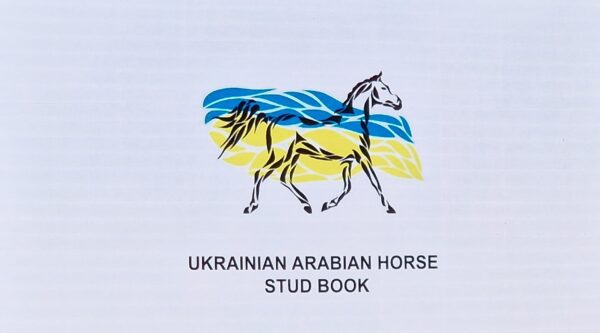
11.33 am
Now onto Zimbabwe. This is the first time in over two decades that Zimbabwe has been able to send delegates – having been accepted as a registry member in 1996. There are only four members and three active breeders, but 18 foals have been born since 2022, when the the registry was reformed after a difficult financial period for the country.
There is only one active breeder in Botswana, with seven foals born. Lesotho is still yet to register a foal.
Zimbabwe, too, is affected by African Horse Sickness although not as badly as in Namibia.
They held their first Championships in 2024, the first in 20 years. They show in partnership with Namibia, as mentioned earlier.
11.27 am
Estonia are the next registry to share their talk. Like much of Europe, Arabian horse breeding has decreased. They have one horse show a year, an Arabian Horse Day, with between 10 and 20 horses competing.
Their stud book is online and it is full of information including competition results. This is quite detailed, show evaluation on type, body and topline, etc. It is quite fascinating and well worth a look!

11.23 am
Slovenia is next. Their bloodlines are dominated by imports from Italy and Poland, with around 30 foals being bred each year. They will also have a stud book out towards the end of 2025.
11.18 am
We begin with Azerbaijan. They have around 200 Arabian horses in the country. They don’t have any shows, but they are planning to organise seminars.
11.17 am
We are back!
10.40 am
Now to Russia, a country that has a long history with the Arabian horse. They consistently breed around 300 foals a year, with the Tersk State Stud breeding around 70 of those foals. Again, a fascinating insight into the country. It is now a 30 minute break – back at 11.15!
10.33 am
On to Bolivia! They are also a small registry, but Arabian horses have been present in Bolivia for many years. They became a full member in 2022, as they had enough Arabian horses in the country to have their own stud book. They, too, will have a new stud book out this year, and is also available online.
10.28 am
Romania are next. They have a State Stud as well as private breeders. They breed around 60-70 foals a year. Danubius Arabians are well-known private breeders, who compete internationally and show the Romania Arabian to the world. They have raised the standard, inspiring breeders. Their stud book is online, which is always good, with the latest stud book currently awaiting approval.
10.23 am
Algeria are the next to speak, who breed around 200 foals a year. They provided an insight into the history of the Arabian horse in Algeria, with many horses coming from France as well as England and Sweden.
10.18 am
Israel isn’t here this morning, so it is straight to Denmark. They pay tribute to Marianne Tengstedt, who passed away this year. Her loss is deeply felt by many, and it is wonderful that she was acknowledged.
The society only has 19 members, partly due to costs, and partly due to government issues. With such a small number, they have transferred their stud book to a national stud book.
In 2024, they hosted the Emirates Global Cup, which gave the Danish Society a great boost.
10.14 am
Uruguay is next, a country that came on the international spotlight when Excalibur EA took the World Championship title in the national colours. However, the breed goes back a long way in Uruguay, and they breed around 140 Arabian horses a year. As well as purebred, half-Arabians are also bred.
They are concerned as breeder efforts are being disregarded as horses are being exported without registration. This will no doubt cause problems further down the line, but is also a slight to the breeders.
They close by thanking all present for keeping the breed alive.
10.09 am
Onto Bulgaria, who also breed in small numbers but are very proud of their Arabian horses, which come from nine bloodlines. Like many, embryo transfer is allowed but is not currently practiced. They have four volumes of the stud book published and have completed the next. Bulgaria has around five race meetings a year, as well as horse shows and endurance events. Every year, there is an exhibition filmed by TV where they showcase the Arabian horse in Bulgaria, which is a positive thing.
10.06 am
Colombia is next, who have bred 11 foals a year for the last two years. The Colombia Association plays a big part in promoting Arabian horse events and educational seminars.
10.03 am
We are now onto Japan, also attending for the first time. Since 2020, there have been no Arabian foals registered. This was naturally a very short report, but it offered an insight into the Arabian horse activity in Japan.
9.53 am
Namibia goes next, who are humbled to be here. Last year, they bred 55 Arabian foals. They do allow embryo transfers, but so far, no one has done this in Namibia. The members in Namibia form a very close community and they support each other. With such small numbers, they look forward to many years of friendship.
They are working on their next stud book, which the look forward to having entirely online. African Horse Sickness is currently hitting the country, which is causing a lot of devastation.
The Namibian delegate emphasises what a unique group WAHO is, something we all agree with.
They share a video which is based on an initiative by the late Holger Ismer of Arabian horse breeders in Namibia and Zimbabwe. This makes one wonderful event, with horse shows in both countries as well as tours around the breeders. Everyone is invited!
Peter thanks Namibia, adding that this is the first time they have presented a delegate report.
9.49 am
Next we go to Chile. They have 7,500 Arabian horses registered, and the next volume of their stud book will be published this summer. Like many countries, endurance is a big thing – I do feel that we need to be sharing more about this sport, rather than just the big events. It is a way that so many fall in love with the Arabian horse, and it showcases the great qualities of the breed.
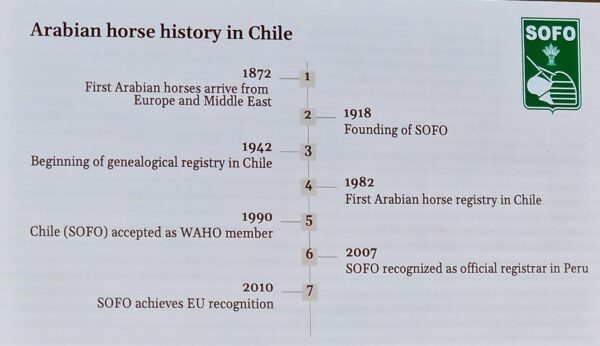
9.45 am
Lebanon is the next registry to share their news, a country also afflicted by conflict. Last year, four Arabian farms in the south of the country were burned and over 30 Arabian horses were lost. Yet more innocent victims of war, and we will sadly see more of this, not less. They have asked if the WAHO family will stand with them – which of course, we will.
Peter wishes them, and all war-afflicted countries, the best on behalf of the members.
9.42 am
Next is the turn of Sweden, who celebrated their 50th anniversary in 2024. Like everywhere, the economic downturn has seen a reduction in the number of foals being bred.
9.37 am
Wow, the South African breeding numbers went up last year, from 261 in 2023 to 597 in 2024! Endurance riding is particularly popular in South Africa, and they utilise social media in the education and promotion of the breed.
Arabesca Scarlet Moon is the winner of the 2025 WAHO Trophy – dam of the superstar colt Azzaam al Amal now owned by Albidayer Stud and who is sweeping the championships this year.
9.36 am
Peter shares his own anecdote about Pakistan and what a wonderful place it is. He visited in the 1990s and encouraged them to put an application in to join WAHO, which they did and was duly accepted.
South Africa next.
9.27 am
Now for Pakistan, who has been a member of WAHO since 1997. They have a very active membership, with 99 foals bred last year – up from 39 the year before – and they have a mix of educational days and events.
They close their presentation with a video, showing the beauty of the country and their horses – including a WAHO Cottage set in WAHO Park at the Mona Remount Depot, honouring their involvement in this organisation. It is a beautiful video, showing the Arabian horse in all disciplines including polo, as well as loose in the paddocks. Having watched that video, I am sure I am not alone in now wanting to visit Pakistan and to see the Arabian horses there!
9.23 am
On to Swizterland – they bred just 11 foals last year, but remain passionate about the Arabian breed. Their stud book is online and accessible for all, which is always good. The Arabian horses at their show are judged on 11 criteria, to give a more rounded feedback on the horses.
At the National Stud, there was a Day of the Arabian Horse, which gave the Society and their members a chance to showcase the breed to a wider audience.
9.20 am
Canada are next – the first time the Canadian registry has been represented at WAHO since they hosted a conference in Calgary in 1982. This is all down to the incredibly generous support and sponsorship of HH Sheikh Mansour and this has allowed so many different countries to attend the conference this year. The bar has definitely been set for whoever holds the next conference!
Canada is part of GCAT Americas this year, and they are looking forward to hosting this prestigious event.
9.18 am
Netherlands are back. They say that much of their exports are going to China, making a nice synergy with the previous talk. Around 100 foals are bred each year in the Netherlands, and they like to share their horses in the traditional ways.
9.14 am
China will host the Emirates Global Cup this year, which is the first time the EAHGC is held in China, something they say is a huge honour. They look forward to working together with the WAHO family in the future. They appreciate all the support from the WAHO office and WAHO family as they continue to become a full member of WAHO.
As they finish, Peter reminds us that this was the first official report from China, which is met with applause.
9.10 am
The first stud book in China was published at the end of last year. And the first Arabian horse arrived in China 90 years ago, so there is a lot to celebrate for one of WAHO’s newest registries.
9.08 am
It is straight back to the delegate reports. The Chinese are going first as they have be at their Embassy at 10.45am – Peter says that, with some indulgence, he will allow them to move. Then we go back to Netherlands, who were next to go after yesterday’s thrilling end with Brazil.
Peter has stressed that time is tight and each report must be kept to three or four minutes – let’s see!

9.06 am
Peter opens the second day of the General Assembly. He hopes we are making new friends and catching up with old ones – he says that is the magic of WAHO, that it brings us all together every two or three years. He is right, it truly is a special and unique event. he declares the day officially open.
9.03 am
For those wondering, we still don’t know the itinerary of the Heritage Days as yet; hopefully today!
8.58 am
Before we begin, a quick word about last night before we start. We had a wonderful dinner at the Ritz-Carlton, with a breath-taking view of the Sheikh Zayed Grand Mosque. Peter Pond welcomed everyone, and it was a classical evening of Middle Eastern hospitality, and a wonderful way to bring everyone together.
